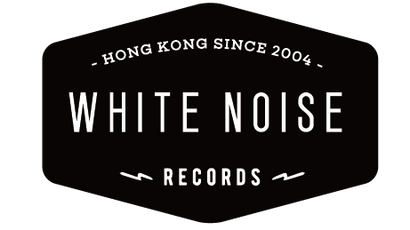Canadian ensemble BadBadNotGood made their name by crossing genre. This seamless movement between style hit hard when they took hip hop into jazz and vice versa. Their latest album – and first with XL recordings – demonstrates them going back to their instrumental beginnings. Instead of looking at the now, they reflected the history and innovation of those that influenced them. To paraphrase Lamont Dozier, this is an album about going back to their roots.
BadBadNotGood formed in 2010, moving between three and four members before establishing its current line up in 2015. The band, aka Alexander Sowinski (drums), Chester Hansen (bass) and Leland Whitty (guitar and woodwinds), met on the Humber College jazz program in Toronto. At the time, instead of working with traditional jazz standards, the group sidestepped and drew from hip hop and other contemporary genres to create a unique sound rooted in Black American music, but 2021’s Talk Memory pays homage to the musicians, composers and influences that first informed their work.
One of the central driving forces behind their latest album was to capture some of the focus, energy and improvisation which is at the heart of their live shows. As they noted, a song is a living breathing thing that naturally changes and evolves as it is played in different settings. This is an album that plays with that thinking. After years of touring, the band paused, refreshed and looked at their history and experiences before starting out on their current instrumental project. A sense of reflection and renewed communication is at the heart of their current approach to making music, and the spark that led to the album’s pensive title Talk Memory. Instead of recording and then developing the tracks on tour, the band decided to slow down and rethink their creative process. By the time they entered the studio and recorded the improvised performances, they had already clearly approached the process of writing and composition. The approach was more intentional, had a longer gestation period and was created over two years. The speed of their compositions, performance and sound has shifted in fresh ways. Instead of improvising and growing their tracks on tour, that process happened in the studio.
The band demonstrates a sense of emotional and poetic progress, not just technique and virtuosity. They consider themselves constant students, always listening and striving for new directions. Those new paths range from moments of cinematic pacing to distorted improvisation. The album is a kind of aural odyssey, with all the sense of psychedelic narrative that entails. It is about drawing on the energy of collaboration as it happens. The band recorded their latest work in analog studios, as an intentional way to stay present and experience without drawing from the internet for research or references.
There is also a shift to the collective rather than the ego. Rather than focus on credit, this is an album about collective balance and harmony. Even when it includes guests like iconic Brazilian producer and musician Arthur Verocai. Here the energy is about community and ensemble in its true sense. When New Orleans jazz emerged in the early 20th century, the concept of united syncopated rhythms playing as an ensemble group was fundamental to its sound. The birth of 20th century music was intertwined with the concept of collaboration. Here there is something utopic about collaboration, community and music as a special, perhaps even spiritual form of non-verbal communication.
Talk Memory does not exist in a vacuum. It is the first element in a multi par project, which exist as projects in their own right as well as intersect. The project is deeply cross generational, as BadBadNotGood brought attention to the lineage of artists that came before them and explored the privilege of being able to bring their experience and skill to their music. The album includes contributions from a breadth of multi-instrumentalists including Arthur Verocai, Laraaji, Terrace Martin, Brandee Younger, and Karriem Riggins, with the album mix coming from Russell Elevado.
Another element is an expanded take on a contemporary counter culture book. The direction and sense of this publication will be preempted by a series of poster zines released with each single. The book is a homage to the structure and expanded take on meaning and information in something like the 1960’s Whole Earth Catalog. A brainstorm and examination of concepts, creators, spaces, objects, teachers, terms and many other things BadBadNotGood are passionate about. It was also a chance to speak and profile their collaborators in more detail. What holds everything together is, of course, music.
BadBadNotGood’s latest album emphasizes how music as a conversation is innately collaborative and improvisational. In a way, their album is a giant take on a classic moment from live jazz or soul, where a band’s ‘leader’ would introduce each member of an ensemble and invite applause. In turn BBNG, have created an album that is a heartfelt expression of joy for the music and community they are lucky to inhabit.


![Minuano - Love Logic [PRE-ORDER, Colored Vinyl Release Date: 1-OCT-2025]](http://whitenoiserecords.org/cdn/shop/products/Minuano-LoveLogic2_{width}x.jpg?v=1641548842)





































































![The Smile - Wall of Eyes [PRE-ORDER, Vinyl Release Date: 26-Jan-2024]](http://whitenoiserecords.org/cdn/shop/files/the-smile-wall-of-eyes-pre-order-vinyl-release-date-26-jan-2024_{width}x.jpg?v=1700121449)
![The Smile - Wall of Eyes [PRE-ORDER, Vinyl Release Date: 26-Jan-2024]](http://whitenoiserecords.org/cdn/shop/files/img32806_the-smile-wall-of-eyes-pre-order-vinyl-release-date-26-jan-2024_{width}x.jpg?v=1700121452)








![my little airport - 跟你開玩笑 [PRE-ORDER, Release Date: 17-Dec-2022]](http://whitenoiserecords.org/cdn/shop/products/my-little-airport-_E8_B7_9F_E4_BD_A0_E9_96_8B_E7_8E_A9_E7_AC_91-pre-order-release-date-17-dec-2022_{width}x.jpg?v=1665575387)
![Pulp - More [PRE-ORDER, Release Date: 6-JUNE-2025]](http://whitenoiserecords.org/cdn/shop/files/pulp-more-pre-order-release-date-6-june-2025_{width}x.jpg?v=1746185001)
































